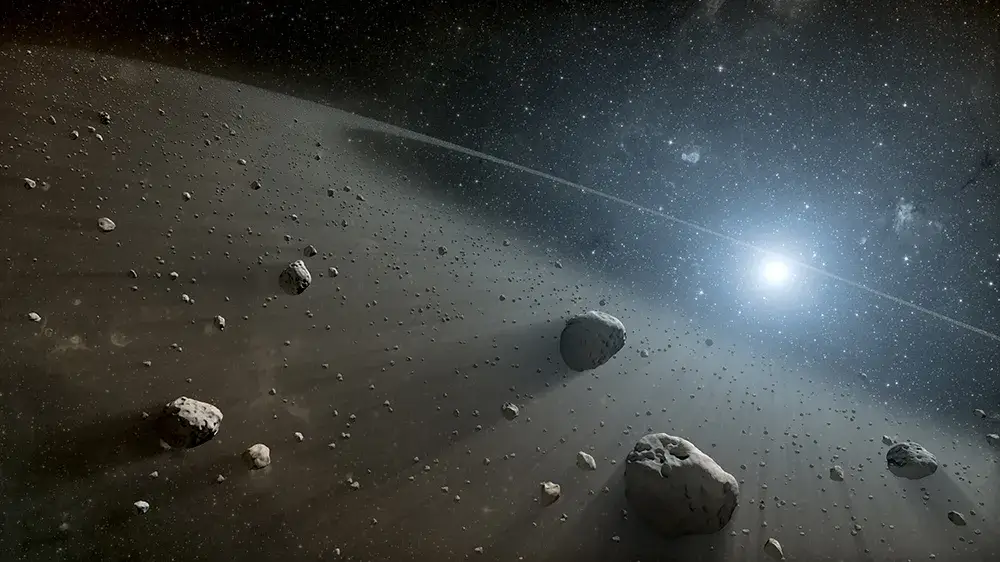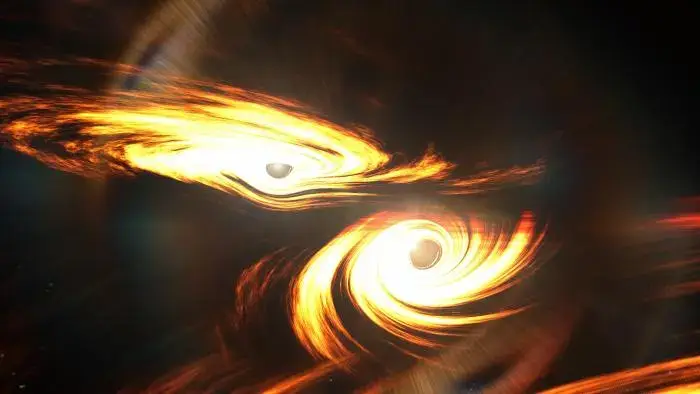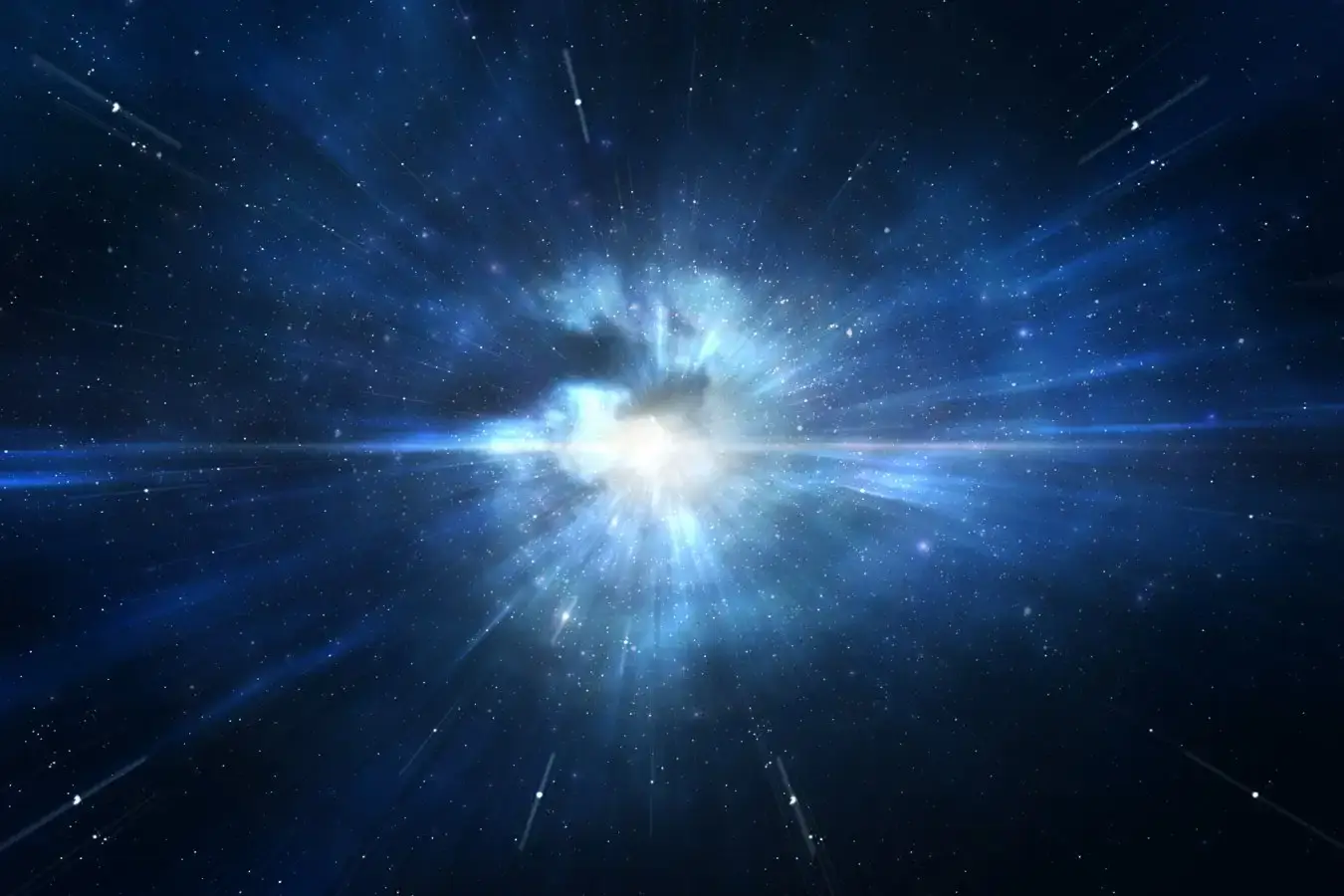Astrophysicists find structure in 74 exocomet belts orbiting nearby stars
Advanced imaging unveils the icy composition and dynamic structures of exocometary belts, offering insights into planetary system evolution.

Advanced imaging techniques reveal the structure, evolution, and diversity of exocometary belts in planetary systems. (CREDIT: NASA/JPL-Caltech)
Planetesimal belts, remnants of the planet formation process, hold a wealth of clues about planetary systems beyond our own. These belts, analogous to the Kuiper and asteroid belts in our Solar System, are frequently detected around stars within approximately 150 parsecs of Earth.
Surveys using infrared excess measurements reveal that at least 17% to 33% of nearby stars host these belts, with younger systems potentially showing a prevalence as high as 75%. The detection of these belts underscores their importance in understanding planetary system evolution.
These belts are dynamic and continually replenished. Dust within them is short-lived, removed by collisions and radiation pressure. Larger bodies within the belts collide, generating new dust in a cascading process.
Over time, the belts lose mass through this mechanism, with infrared observations revealing a decline in brightness that aligns with age. The rate of this decline varies depending on the specific evolution model, with some predicting a steep t⁻¹ decrease, while others suggest a more gradual t⁻⁰⁴ trend.
The belts’ composition offers further insights. Observations across multiple wavelengths, from mid-infrared to millimeter, show that the dust temperature typically ranges from a few tens of Kelvin to around 120 K. This temperature suggests the belts are located tens of astronomical units (au) from their stars, akin to the outer regions of our Solar System.
These regions are often rich in volatiles, hosting icy exocomets. The detection of carbon monoxide gas in many belts confirms the icy nature of these bodies, as the gas originates from exocometary activity. In some systems, additional warmer dust is detected closer to the star, potentially analogous to the asteroid belt in our Solar System.
High-resolution imaging has transformed our understanding of these structures. Instruments like the Hubble Space Telescope, ALMA, and the Submillimeter Array have resolved belts into intricate structures, revealing their diversity.
Some belts are narrow rings, similar to the Edgeworth-Kuiper belt, while others form broader disks. Many systems exhibit multiple rings or disks, and some show eccentricities that suggest the gravitational influence of unseen planets.
Related Stories
A groundbreaking study, the REASONS (Resolved ALMA and SMA Observations of Nearby Stars) program, has provided unprecedented insights into these structures. Led by a team from Trinity College Dublin, the program analyzed 74 planetary systems of varying ages.
Using advanced imaging techniques, the researchers mapped the location of millimeter-sized pebbles within these belts. These observations revealed the belts’ icy composition, with temperatures ranging from −250 to −150 degrees Celsius, marking the locations of planetary ice reservoirs.
“Exocomets are boulders of rock and ice, at least 1 km in size, which smash together within these belts to produce the pebbles that we observe,” explained Luca Matrà, senior author of the study. The belts’ diversity highlights the complex dynamics of planetary systems. Some systems feature narrow rings, while others are broad disks, and many exhibit eccentricities pointing to gravitational perturbations from hidden planets.
Dr. Sebastián Marino of the University of Exeter noted, “The images reveal a remarkable diversity in the structure of belts.” The study also found that the abundance of pebbles decreases over time, particularly in belts closer to their stars. This suggests that older systems lose material more rapidly, aligning with theoretical models of collisional evolution.
The findings also hinted at the presence of massive unseen objects. The belts’ vertical thicknesses indicate gravitational influences from bodies as large as 140 kilometers in diameter, potentially up to Moon-sized. These hidden objects provide additional evidence of the complex interplay within these systems.
Dr. David Wilner from the Center for Astrophysics emphasized the significance of these observations. “Arrays like the ALMA and SMA are extraordinary tools that give us incredible new insights into the universe,” he said. The REASONS dataset has immense legacy value, paving the way for future investigations into the birth and evolution of planetary systems.
The REASONS program’s success highlights the importance of a collaborative approach. By combining data from ALMA and SMA, researchers achieved high-resolution imaging of belt structures. These observations captured the emission from millimeter-sized pebbles, which are unaffected by radiation forces and directly trace the parent planetesimals. This precision allows for a clearer understanding of belt dynamics and evolution.
Future studies will build on these findings. Advanced telescopes, such as the James Webb Space Telescope and the next generation of Extremely Large Telescopes, promise to delve deeper into these systems. Upcoming programs, like ALMA’s ARKS Large Program, aim to provide even greater resolution, uncovering finer details of belt structures and their interactions with surrounding planets.
The study of planetesimal belts is not just an exploration of distant systems; it is a window into the processes that shaped our own Solar System. By understanding how these belts form, evolve, and interact with their environments, researchers are piecing together the broader story of planetary system development.
The REASONS study marks a significant step forward, providing a foundation for future discoveries that will continue to unravel the mysteries of the cosmos.
Note: Materials provided above by The Brighter Side of News. Content may be edited for style and length.
Like these kind of feel good stories? Get The Brighter Side of News' newsletter.
Joshua Shavit
Science & Technology Writer | AI and Robotics Reporter
Joshua Shavit is a Los Angeles-based science and technology writer with a passion for exploring the breakthroughs shaping the future. As a contributor to The Brighter Side of News, he focuses on positive and transformative advancements in AI, technology, physics, engineering, robotics and space science. Joshua is currently working towards a Bachelor of Science in Business Administration at the University of California, Berkeley. He combines his academic background with a talent for storytelling, making complex scientific discoveries engaging and accessible. His work highlights the innovators behind the ideas, bringing readers closer to the people driving progress.



